The Evolution of Mercury Outboard Propeller Shafts
The propeller shaft is a critical component that transfers power from the engine to the propeller.mercury outboard propeller shafts It is a crucial element in marine vehicles, as well as on-road and off-road motorized vehicles. It is also a vital component in railway vehicles, allowing them to move efficiently along tracks. Propeller shafts are also used in many commercial applications, including cranes and forklifts.
In the early 1950s, a shear pin was introduced to protect the drive shaft against damage by underwater debris.mercury outboard propeller shafts This shear pin passed through the hub and shaft and was made from a softer material that allowed it to break apart rather than crush. This system was effective, but it did not protect against a direct impact from a hard bottom strike.
As the demand for higher horsepower engines and more diverse on-water activities increased, better solutions were required.mercury outboard propeller shafts These led to the development of a vulcanized rubber hub system that incorporated a rubber sleeve tightly wound around a splined tube. This sleeve was then heated to create a chemical bond called vulcanization and formed an integral part of the prop shaft assembly. This technology was widely adopted throughout the 1960s and '70s.
A key factor in the success of the vulcanized rubber hub system was that it offered an ideal balance of strength, durability and flexibility. In addition, it could be adapted to accommodate a wide range of engines and propellers. Mercury worked closely with DuPont to select the ideal Delrin formula to ensure this optimal balance and formulated the Flo-Torq hub system. Today, the Flo-Torq system is the recommended hub kit for nearly all Mercury two-stroke and four-stroke outboard engines and can be paired with a wide variety of propellers to provide a complete outboard solution.
In addition to shear protection, the vulcanized rubber hub system also provided a degree of vibration dampening. This was achieved by incorporating bearings at multiple points on the shaft to reduce friction and improve overall performance.
Mercury's engineering and manufacturing teams have continued to evolve the Flo-Torq hub system. Over time, components were added to increase the strength and durability of the shaft assembly, while other features were implemented to address specific boater demands. For example, some components were created to help reduce shift clunk when using stainless steel props and others were developed to better handle the vibration associated with higher HP engines.
Aside from the flange yoke that links the propeller shaft to companion flanges or components, the end yoke is another vital component that provides critical support and alignment capabilities. The end yoke consists of a fork-like structure with arms that encircle the shaft and connect it to companion flanges or shaft components. This helps mitigate bending and torsional stresses in long propeller shafts and enhances the overall reliability of the entire shaft system. In addition, the end yoke allows the shaft to extend and contract at the same rate as the suspension of the vehicle, providing an even and smoother power transfer.
